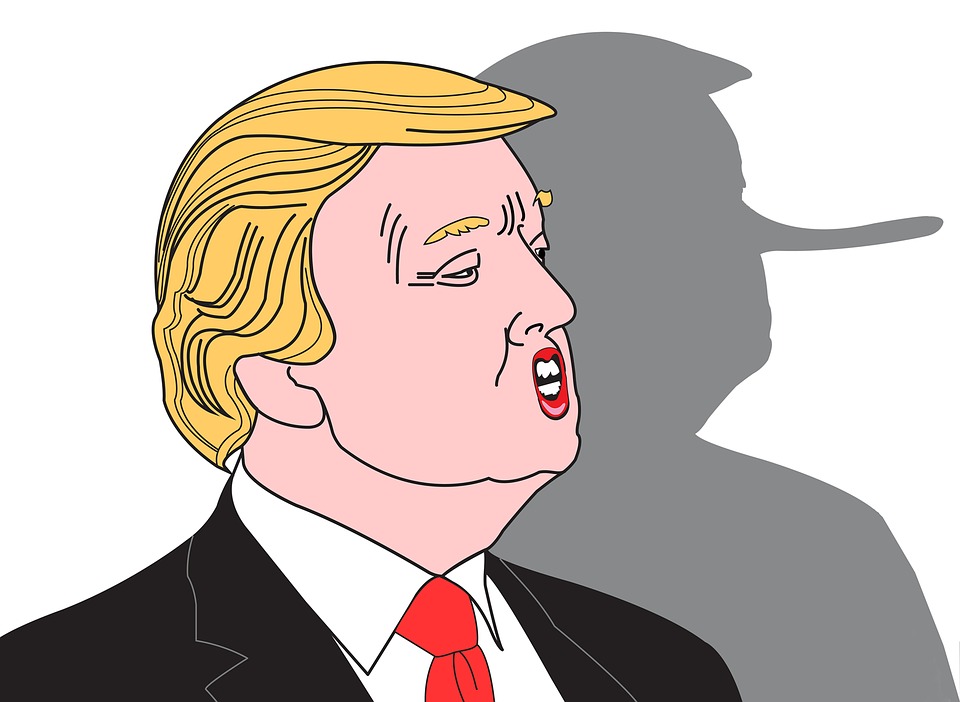Most of us tell lies everyday: saying you’ve left the house when you’re still getting ready, telling yourself you’ll never drink again after a particularly wild night out, or even just saying you’ve read and agree to the terms and conditions. Sometimes we might tell some slightly bigger ones, such as calling in sick for work when you’re really just hungover, or pretending not to know about that broken flower pot in the backyard. Most of us probably wouldn’t go much bigger than that though, especially if it was to our boss and our job was on the line.
This doesn’t seem to apply to politicians, however. In perhaps one of the greatest feats of irony, what should be an open and honest profession (since everyone theoretically knows what you’re doing) is frequently riddled with lies and deceit. Many of us have come to accept this as a regular feature of politics, especially around election season, and this year seems to be no different. Trump has helped to shape the narrative that Clinton is just another lying, conniving member of the elite, while in fact he himself would put Pinocchio to shame.
In order to keep track of all the porkers that have been thrown around, fact-checking website, Politifact, which won a Pulitzer Prize for its reporting on the 2008 election, has been keeping a close on eye on what has been said so far this election season. They look at various statements of fact by each candidate, and then assign each of those a true or false rating. As not all claims are created equal, their scale goes: True, Mostly True, Half True, Mostly False, False, and Pants on Fire.
So just how much can we trust Trump and Clinton? Well, of the 291 of Trump’s statements that Politifact has rated, just 12 (4%) were deemed to be True, meaning “the statement is accurate and nothing significant is missing.” He doesn’t have many more Mostly True or Half True statements either, with just 33 (11%) of the former, and 40 (14%) of the latter. Respectively, these terms mean that such statements are “accurate but need clarification” and “partially accurate but leave out important details”.
You would think that one of the final two candidates for perhaps the most important job in the world would be telling the truth more than 29% of the time, but it gets worse the more you go on. While 54 (19%) of his statements are Mostly False, that is they contain “an element of truth but leave out critical facts that would give a different impression”, a whopping 102 (35%) are False. That means one in every three statements he makes is completely inaccurate. On top of this, 50 (17%) of these statements were rated Pants on Fire, meaning that the claim is ridiculous as well as being inaccurate.
Clinton on the other hand, for all the lambasting she has received, performs much better. Politifact have so far rated 270 of her statements, with 65 (24%) of them coming in as True. Another 73 (27%) were rated Mostly True, and 58 (21%) were judged to be Half True. This means that Clinton tells the truth, or something close to it, 72% of the time. While this may seem high, especially in comparison to Trump, it’s worth noting that this still means one in four of her claims are more untrue than not. The exact breakdown is that 40 (15%) of these statements are Mostly False, and 28 (10%) are completely False. Of the 270 statements, just 6 were so inaccurate that they were deemed Pants on Fire, a much smaller number than that of Trump.
While this obviously teaches us that we should always double check what we’re being told, the sad reality is that many people hear lies like these and never realise the truth. Most of us don’t have the time to fact check every statement ourselves, and we rely on journalists, debate moderators and the candidates themselves to paint a clear picture of the truth. Unfortunately, there has been much controversy this election cycle over whose role it is to keep the candidates in check.
Whose responsibility is fact-checking?
While debate moderators are increasingly pressured to act as fact checkers during debates, many believe that it should be left up to the candidates themselves. Given Trump’s lies about not supporting the Iraq war, and that America is one of the most highly taxed nations in the world, it seems reasonable that the best method would be to have these claims struck down as false by the moderators. Yet, journalists such as Fox News anchor Chris Wallace, host of the third debate, claim that it is the duty of the candidates, the ones actually participating in the debate, to call out lies and inaccuracies.
The problem is that this often leads to a “he said, she said” narrative, with many reporting on the candidates’ responses to each other’s claims, rather than directly dismissing claims as false, which helps to foster the idea that neither candidate is right. This helps to fuel Trump’s claims that Clinton is a pathological liar, and that he is the one exposing the deceit of the elite, yet in reality he is the one whose pants are on fire.
While many media outlets have started to do regular fact checks on the debates, these articles simply don’t reach many people. The debates themselves are the best way to reach the largest audience and allow people the opportunity to hold politicians to account publicly for the things they’ve said. Newspaper articles published after the fact just don’t have the same reach. With a growing distrust of experts, and the rise of Trump despite his outrageous lies, it’s imperative that we find a way to restore some truth to politics.








